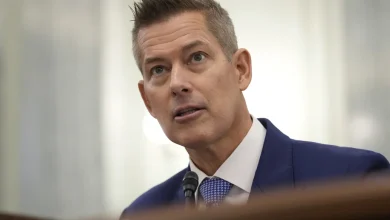La Niña vs. polar vortex? Forecast warns of ‘extraordinary’ winter weather.

A sudden, dramatic shift in temperatures high in the atmosphere will dance with the La Niña weather pattern. There won’t be a clear winner, and forecasters are still determining how cold it could get.
Something unusual may be brewing in the stratosphere, and meteorologists say it could change the course of the winter forecast.
The atmosphere is at a “critical juncture,” and what happens in November could be a “fork in the road” for the rest of the winter, said climatologist Judah Cohen, a research scientist at MIT, in an email to USA TODAY.
Weather models are signaling the stratosphere could warm suddenly, possibly causing a counter-intuitive cooling effect at the surface of the planet.
If “a sudden stratospheric warming” event does occur, cold and snow could soon be arriving across much of the nation.
Cohen said the developments will determine how the often-misunderstood polar vortex influences weather in the United States and how cold air from the north will be steered by the La Niña weather pattern.
What’s the winter forecast? Watch AccuWeather’s winter outlook.
It won’t be long until the cold and snow return. AccuWeather’s long-range experts share what you can expect this winter to be like in the U.S.
‘An extraordinary and unique event’ could be brewing
Cohen described a possible chain of events that could soon occur: The stratosphere above the North Pole suddenly warms, pushing cold air south toward the United States.
It’s called a “sudden stratospheric warming” (SSW) and it’s “the largest type of disruption that occurs to the polar vortex,” Cohen explained.
“It is named because of the dramatic warming that occurs in the polar stratosphere (warming near the North Pole can exceed 100 degrees in just a few days),” he said. “The warming displaces the polar vortex much further south than normal.”
If the stratosphere does warm suddenly, it would be the first such event in November since accurate satellite records began, he added.
There were two known events in the pre-satellite era, November 1958 and 1968.
“I tend not to rely on stratospheric data before satellite data was available,” Cohen said. So if a stratospheric warming event occurs, “that would be an extraordinary, even unique event.”
La Niña vs. polar vortex?
If Cohen’s scenario plays out, the polar vortex would play a big part in upcoming weather — but as meteorologists have previously said, La Niña is also a major force at work.
The relationship between the two is complex — there won’t be a clear winner or loser in which weather pattern dominates winter.
Instead, the polar-vortex weather pattern has a greater say in how cold it gets and La Niña’s influence helps steer that cold weather, according to Cohen.
Overall, Cohen believes that “the behavior of the polar vortex is more influential in determining if the US will experience cold weather.”
Will the cold air reach the ground?
Cohen said the key question for our weather is how strongly does the warming up in the stratosphere influence our weather down here at the surface, in the troposphere? If the warming event strongly influences the jet stream and our weather, it would mean an extended period of colder and/or snowier weather starting sometime in December, he said. It could also extend into early January, and “greatly tilt the odds to a colder winter in the US.”
“If that polar vortex-jet stream coupling is weak or short circuits, it could be overall mild across the US for the foreseeable future and I believe greatly increase the odds for an overall mild to quite mild winter for the US.”
(This story was updated to meet our standards.)





